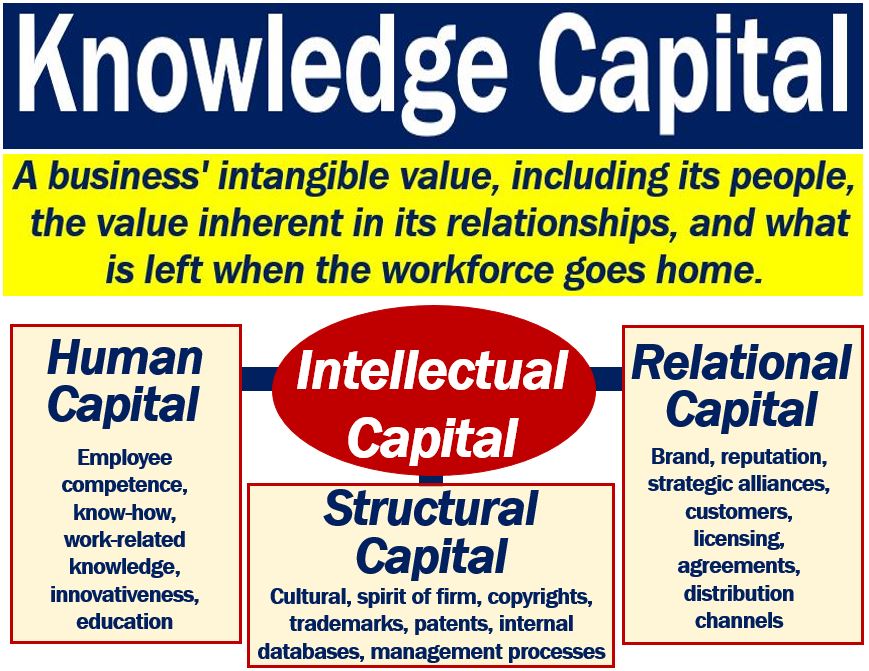Knowledge capital or intellectual capital refers to the valuable ideas, methods, and other intuitive talents that a company owns. It also includes the valuable processes that belong to a company. In other words, knowledge capital forms part of the intangible assets that companies own.
Intangible assets are the valuable things that a business has that we cannot touch. We cannot touch them because they have no physical form.
We also call knowledge capital ‘knowledge assets‘.
According to The Law Dictionary, knowledge capital is the:
“Experience, information, knowledge, learning, and skills of the employees of an organization tallied into expertise, high-capability. Knowledge capital is an essential component of human capital.”
Companies that invest time and money in knowledge creation tend to have more valuable knowledge capital than others.
To know where a company’s knowledge is, it needs an inventory of knowledge or a knowledge map. A knowledge map is a very useful visual aid. It can also tell us where the company’s or organization’s experts are.

Knowledge assets and human capital
Human capital is an important component of intellectual capital.
Human capital refers to the investments that companies make in human beings. They invest in people to make them more productive.
Skills, talent, judgment, experience, and education and training are examples of human capital.
Of all the production factors, intellectual capital is the one that builds the competitive advantage that lasts the longest.
Production factors or factors of production are the elements or building blocks we use to make goods. We also use them to deliver services.
Knowledge capital classification
Intellectual capital is normally classified as Human Capital, Structural Capital, and Relational Capital.
– Human Capital is the value that a business’ workforce provides through the application of expertise, know-how, and skills. Know-how is our ability to do accomplish things successfully.
It is the organization’s combined human capability for finding solutions for problems. It is also about exploiting its intellectual property.
– Structural Capital includes the databases and processes of a company, i.e., its supportive non-physical infrastructure. It allows human capital to function.
Structural capital includes trademarks, patents, processes, and the company’s image. It also includes its information system, image, proprietary software, and databases.
– Relational Capital consists of customer and supplier relationships, trade names, and trademarks. It also includes franchises, patents, and licenses.
Knowledge capital audit
A knowledge or intellectual capital audit is an audit of an organization’s intellectual capital. It carries out the audit to oversee its knowledge capital so that it can capitalize.
Specifically, so that it can capitalize on knowledge capital already within the organization.
It also carries out the audit to identify opportunities to expand the organization’s intellectual capital.
Early intellectual capital measurement methods include the Skandia Navigator and the Intangible Asset Monitor. The BSC (Balanced Scorecard Framework) is also another early method.
The Value-Added Intellectual Coefficient (VAIC) method emerged in 1993. The VAIC measures the value that intellectual capital creates.
Video – knowledge capital is the new capital
There is plenty of money across the world. We invest trillions of dollars in companies every year. Capital in the form of cash abounds. However, the upturn in human capital, which includes knowledge capital, is still pretty lackluster.
In this ST Transact video, Rana Foroohar explains why businesses that know and value this are cashing in. Foroohar is a global business columnist at the Financial Times.
